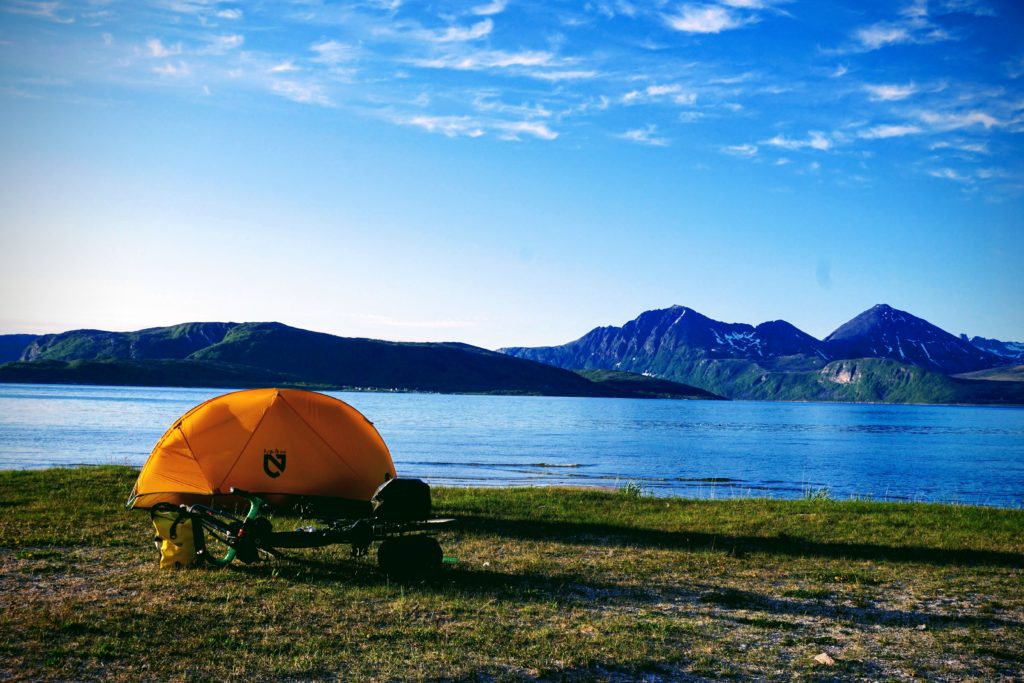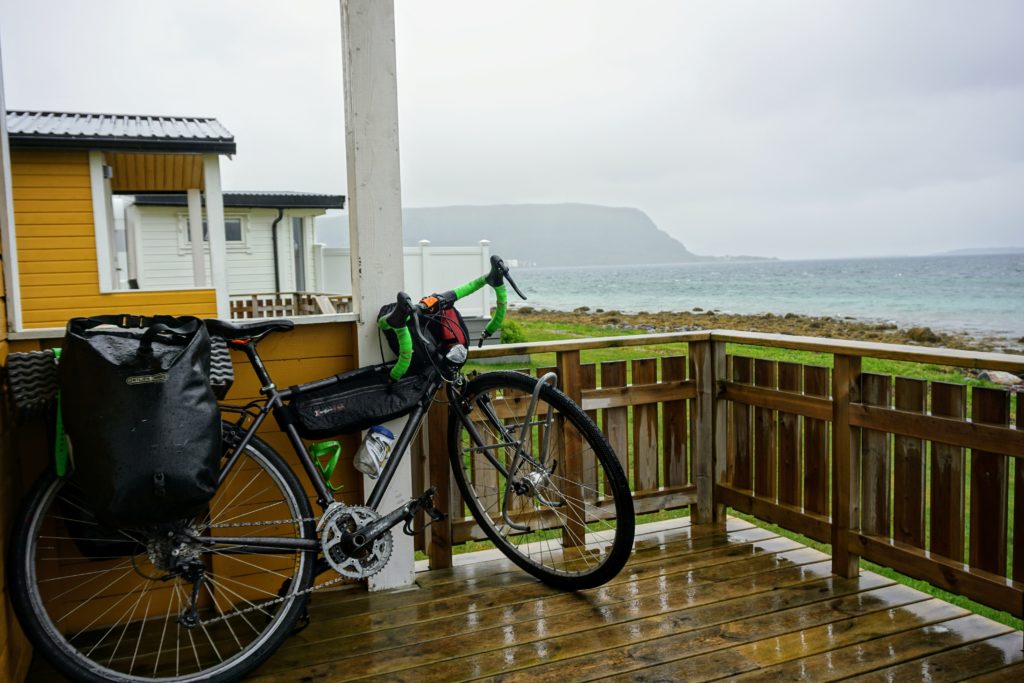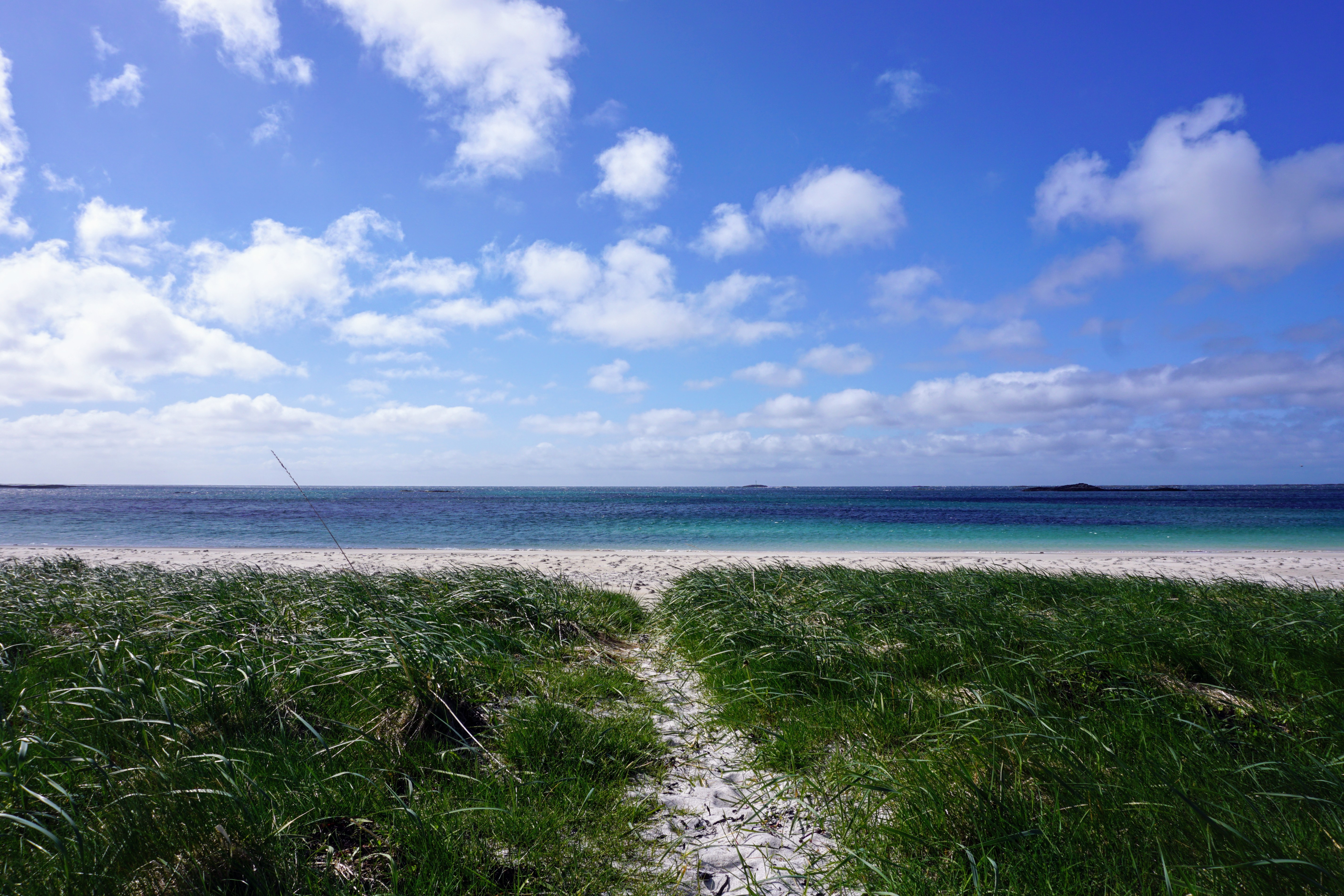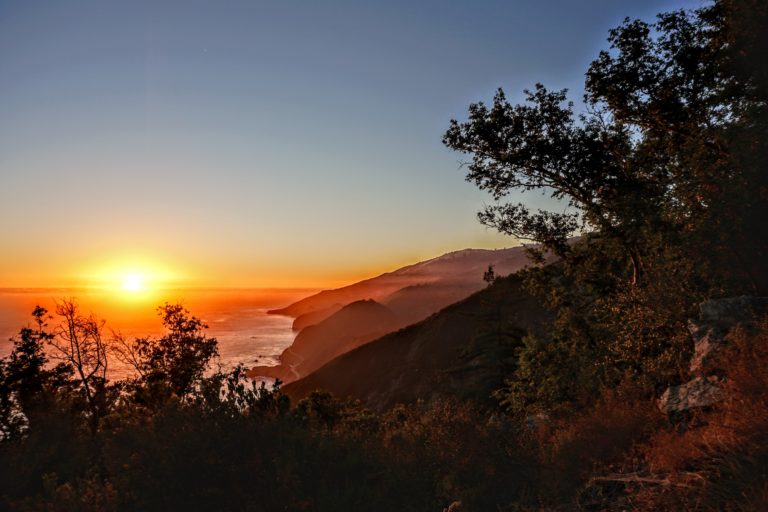
FAQs
- How can you sleep with all that light?
- Why Scandinavia? Why Finland?
- How do you have so much time to travel as an American?
- Isn’t San Francisco a really expensive place to live?
- What surprised you the most?
- Are you glad to be back?
One question I expected to be asked a lot, because it gets asked everywhere else I travel, why are you traveling on your own? On other trips I would get asked this multiple times a day. I think I was asked maybe two or three times this whole trip. It was a very pleasant change. I don’t get self conscious about solo travel but when asked about it multiple times a day it just reminds me that I am all alone.
Stats
| Norway | Finland | Total | |
| Days Free Camping | 27 | 13 | 40 |
| Days in Paid Lodging/Camping | 14 | 8 | 22 |
| Days in Free Lodging | 0 | 2 | 2 |
| Total Expenses (excluding flights and including layovers in the total) | $1704 | $1019 | $2773 |
| Paid Lodging (USD) | $488 | $421 | $909 |
| Groceries (USD) | $252 | $100 | $352 |
| Restaurant and Snacks (USD) | $280 | $210 | $522 |
| Ferries (USD) | $126 | $14 | $140 |
| Busses (USD) | $272 | $134 | $406 |
| Miles Ridden | 1368 | 750 | 2117 |
| Elevation Gained (feet) | 80,763 | 18,604 | 99,367 |
| Hours Ridden | 144 | 69 | 213 |
| Days on the Bike | 31 | 19 | 50 |
| Days Off the Bike | 10 | 4 | 14 |
| Saunas Taken | 4 | 6 | 10 |
| Northernmost Point Reached (with the bike, not just on the bus) | Nordkapp 71.1695° N 25.7832° E | Santa’s Village Rovianemi 66.5436° N 25.8472° E | |
| Southernmost Point Reached | Bergen Airport 60.2918° N 5.2220° E | Löyly Sauna Helsinki 60.1522° N 24.9304° E |
Days Free Camping

If I had to do this again I would bring a warmer underquilt for my hammock so that I could hammock in Norway more. While it isn’t ideally suited for the hammock life, it isn’t well suited to tent camping either due to the wet boggy ground and lack of flat areas. Having the option to hang would open up a lot more potential campsites, especially when raining. I hammocked one night when the ground was too wet to pitch a tent and while I was not in danger of freezing I wasn’t particularly comfortable since I had to use my thermarest inside the hammock. I would still take the tent as it was more useful in general and critical up north and on the islands but when it was raining everyday I really wished I could comfortably use my hammock instead of retreating indoors or dealing with a damp campsite.
Even if I had unlimited funds I would still camp whenever possible. It was too beautiful not to do so. However, even if you aren’t inclined to sleep outdoors, there are long stretches of this ride where no paid accommodations exist. Additionally, if you are there during the high season the few paid rooms will probably be booked. A campground I stayed in during a storm was completely booked the second day I was there because of the weather and I was there about a month before the high season. Given how quickly the weather can turn I think it would be irresponsible to take a tour here without at least having an emergency shelter. I can’t stress this enough. I have seen so many people ask about touring Norway without carrying a shelter on bike touring forums and I want to make it clear that I think it is incredibly irresponsible to tour in Norway without the ability to keep yourself warm and dry during a storm that will inevitably surprise you.
Days in Paid Lodging/Campgrounds

Nearly a third of my paid lodging expenses were incurred while I was sick. I came down with food poisoning while camping and dragged myself to the nearest hotel. It ran about $90 per night and I stayed for 3 nights while I recovered. If it had been much more I probably would have left after the first night and slept out the fever and rehydrated my body in the woods somewhere but my feverish brain wasn’t too concerned with price that first night. Fortunately I had the option to get a hotel room. On many parts of this ride that wouldn’t have been possible and I probably would have just stayed in the woods until the fever broke and then suffered on the bike until I arrived at a campground somewhere.
Days in Free Lodging
I used Warmshowers two nights in Finland. I wish I had used it more. I didn’t want to be tied to a specific route and I tend to keep odd hours, especially when I have 24 hours of daylight. That being said, I was quite desperate for socialization after a few weeks and the nights I spent with hosts made a huge difference to my motivation to continue the trip.
Food
I do not enjoy having to cook myself a meal in the cold rain when I’m hungry. I generally ate quite well from the grocery store but when it was cold and rainy I would bribe myself with a gas station cheeseburger or a sausage. Only in Norway does a gas station cheeseburger seem like a great deal at $12. I would linger in cafes, charging my phone, sipping an $8 hot chocolate and $5 waffle. Finland seemed like a bargain after Norway and I ate out a little bit more. However, after the food poisoning incident I was a little wary of restaurants.
While eating out is quite expensive in both countries, particularly in Norway, groceries are reasonable. In Norway I could buy a kilogram of potato salad for $1, a loaf of bread for $2, 200g of smoked salmon for $5, 500g of yogurt for $2, a liter of milk for $3, a block of cheese for $5, and a few apples for $2. $20 kept me happy for a few days as long as I added cookies and chocolate along the way. My groceries in Finland were similar but, since it wasn’t cold enough to keep the refrigerated goods in my pannier long term and grocery stores were much more common than northern Norway, I shifted to buying smaller quantities of food at slightly higher unit prices.
I want to point out that I did not buy alcohol on this trip. Taxes on alcohol are extremely high in both countries. One can of cheap beer from the grocery store would cost more than my groceries. I’m not much of a drinker and I was on my own so this did not bother me at all but if you think the best way to end a hard bike ride is with a cold beer, be prepared to pay for that privilege in Scandinavia.
Expenses
I set my budget based on my pre-tax earnings from my side jobs. I told myself that whatever I earned outside of my day job would be available for traveling and this turned out to be sufficient. I earned roughly $3400 (pre-tax) delivering food and ~$5000 (pre-tax) across all of my odd jobs. I came in under budget which I was proud of. It feels good to know that I didn’t have to dip into my regular earnings or savings for this trip.
I was aware of my expenses on this trip but did not take too many steps to reduce my costs. When it was particularly bad weather I stayed in cabins. I stopped at nearly every bakery I came across and probably a third to half of my grocery budget went to chocolate. I had a few pricey issues: shipping things back home after only a few days, taking the bus to Trondheim, getting sick. In the grand scheme of things, these were not big enough problems to warrant much worry.
It is definitely possible to do this trip without using paid lodging if you’re willing to camp out in the cold rain night after night, but given that Norway is not known for its pleasant weather, I would make sure to allocate some funds for paid lodging along the way so that you can dry your gear out and top up your electronics. I say this as someone who is comfortable sleeping outdoors in bad weather and doesn’t use much in terms of gadgets while riding. Do not underestimate the weather in Norway. It can be cold and damp and windy and rainy at any time of year. These conditions are easy to plan for but potentially fatal if you are not prepared. Most areas are sparsely populated and have little traffic. If bad conditions prevail you can probably catch the once-a-day bus to someplace you can stay indoors but if you don’t think you could stay outside for at least 36 hours in cold windy rain then you should reconsider your preparations. From what I understand about Norwegian culture, if someone found you they would help you, but if you were found completely ill prepared for bad weather, something that happens all the time in Norway, I can’t imagine they’d have much sympathy for you. I heard lots of warnings when I was in Lofoten, a very popular tourist area, related to tourists running into trouble on day hikes because they weren’t prepared for a weather change.
I ate relatively cheaply with groceries (smoked salmon and yogurt sandwiches, cheese, reindeer jerky, milk, apples, and potato salad in Norway; ham and cheese sandwiches, candy, fruit juice, tons of fresh berries, apples, potato salad, and cheese in Finland) but I did eat quite a few cheeseburgers and stopped at cafes for a hot chocolate and a pastry which you could cut out to reduce costs further.
Additional Questions
If you’re considering traveling in Northern Norway or western Finland I’m happy to chat more. I am always appreciative when people have shared their very specific planning and travel notes with me prior to a trip and I am happy to do the same.
FAQs
Why Finland?
Interestingly I was never asked this in Norway. I guess Norwegians understand why people want to visit their beautiful country which they take such pride in and the Finns are a little more surprised when an out-of-towner shows up. The short reason is that I love to sauna. The longer reason is that I think the type of society that values an intimate connection with the natural world and has a relatively flat social structure that is embodied by everyone sitting equally exposed in the sauna is someplace that I want to learn more about. The Finns have fought hard for their independence over the last century, first winning independence from Sweden in 1917 then losing 11% of its territory and 30% of its economy to the Soviet Union after the Winter War in 1940. Finland refused Marshall Plan money after World War II in order to prevent the USSR from invading again, and they were the only country to pay war reparations in full after WWII. How a country manages to thrive under these trying conditions interested me. I’ve always been drawn to people who are tough and survive in conditions that would make most people run away. I learned a lot about the Finnish people in my time there and what I found even more interesting, since I returned to the States every Finn I’ve shared a social circle with has found me to ask the same question, Why Finland?
How do you have so much time to travel as an American?
Fortunately I have skills that are in high demand and pay well so I have had the luxury of quitting my job to travel and be relatively confident that I can come back and find another job quickly. Because of the in demand skills I also have a bit more negotiating power and have valued extra paid leave and flexible work hours over higher salaries. I do think that most Americans could travel more if they wanted to do so, but most Americans’ priorities do not have travel at the top, the same as people anywhere in the world. Additionally, America is a much bigger country than most people seem to realize, myself included for a very long time, and getting to and from an airport to leave the country can be a whole journey in itself. I grew up a 20 minute drive from an airport and didn’t explore much of the US until my late 20s. My college roommate’s parents used to drive from Iowa to pick her up at school in DC. I thought this was ridiculous. Why didn’t she hop on a plane and save her parents a full day of driving in each direction? She told me that it was an eight hour drive to the airport in Chicago from her parents’ farm so no matter what she did, they were still in for a very long drive.
Isn’t San Francisco a really expensive place to live?
This one I found amusing considering that Scandinavia is considered to be the most expensive place to live in the world. Apparently San Francisco’s reputation of being incredibly expensive has reached Scandinavia and now they all think that San Francisco must be even more expensive than their home. I think the cost differences really come down to the type of life that you live.
I found Finnish prices on food, restaurants, and public transit similar to San Francisco. I’ve read that rents are cheaper than San Francisco, but salaries in high paying fields are lower and taxes are higher. Education is free and health care is much cheaper in Finland. After doing a rough calculation of the cost of my desired lifestyle in Helsinki (the most expensive city in Finland) and San Francisco, I think San Francisco is probably more expensive without a high paying tech job but Helsinki is more expensive if you are working in a field that would be high paying in San Francisco. The healthcare and education aspect is one that most Finns were surprised at. The idea of access to these services for everyone is so deeply embedded there that the idea that I pay just as much in rent as I do for my education (which I completed a decade ago) and health insurance was shocking.
Everything was more expensive in Norway. I was there long enough that it started to seem normal to me but after leaving I quickly remembered that I didn’t actually think paying $20 for a burger that would cost me $3 in the States was a good value. Norway is an incredibly wealthy country with very good fiscal control. Norwegians I spoke with still complained about how expensive it is to live there, but they also recognized that they have a pretty good life for themselves compared to the rest of the world. The one complaint that I heard over and over was about the price of alcohol. Everyone acknowledged that the government doesn’t need the tax revenue from the high alcohol taxes and that the tax is truly intended as a vice tax. I didn’t get in any fights with them about this as I don’t know the culture well enough to understand how that contributes to social inequality, but I do generally support vice taxes so I wasn’t going to take to the streets to fight the high alcohol taxes.
What surprised you the most?
The sun really is so much weaker when you are that far north. I could go outside midday and not burn to a crisp in five minutes. As someone who is constantly worried about getting sunburned this was a freedom I had never had before. It made me think about my former colleagues who used to semi-jokingly call me a white supremacist when they would see me drinking milk (they said I was flaunting my genetic ability to process lactose). I never turned the argument around on them but they were flaunting their genetic ability to not get a first degree burn every time they walked out of the office without a hat and jacket. We are all adapted to different climates. I learned that I am much better adapted to the far north than I am to the lower latitudes where I currently live. It only took me three days to get my first bad burn upon my return to San Francisco. I was enjoying a glass of wine on the beach with some friends. An hour later I knew I had made a mistake in not buttoning my shirt all the way to the neck.
Are you glad to be back?
Yes and no. I’m happy to be back and see my friends and family again. It’s been great having a home and not worrying about where to sleep every night. It is nice having a wide variety of food to choose from everyday instead of what’s in my bag or the local restaurant. I miss the freedom I had on the road, I miss the sun that never sets, I miss the cool weather and warm sun that isn’t very strong, I miss going outside and not getting sunburned. I know that even if I had stayed in Scandinavia the weather would change, the eternal days would turn into eternal nights and I would need to worry about sunburn even less than before. But I do love winter and I love the dark so I want to go back to experience that. San Francisco has seasons but they are very different from those I grew up with. The sun here is much stronger than the cool air would have you to believe. I got a bad sunburn within a week of being back because I decided to stay on the beach for an hour and missed covering a spot on my chest. Life is different now that I’m in school and beholden to someone else’s schedule. It’s a good change but it’s a change nonetheless.


